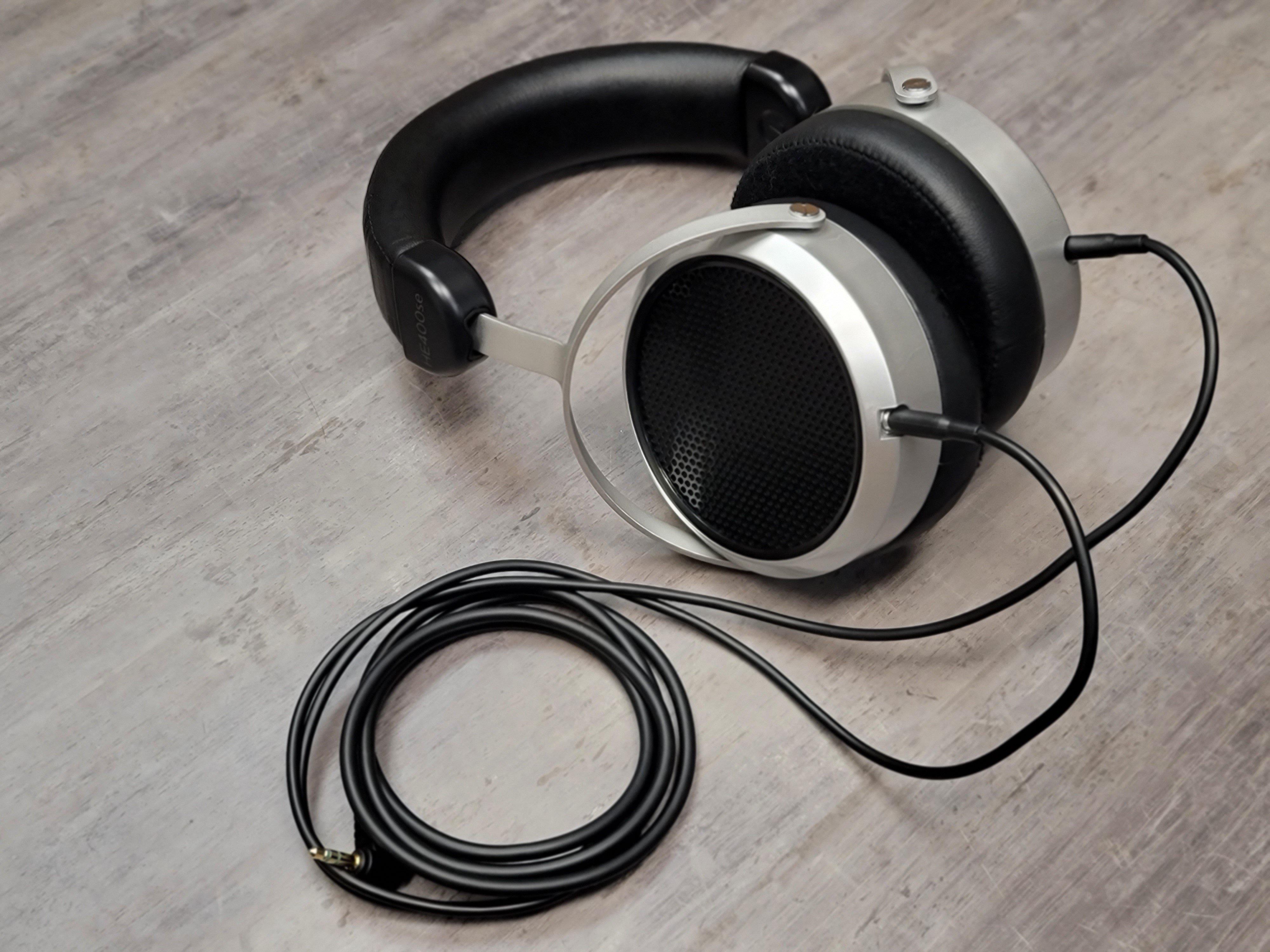The HE400 has a nearly ten year history, and was one of HIFIMAN’s early breakthroughs into the mainstream headphone world. The all-new HE400se is an evolution of that original HE400 model that takes the original design with features like “stealth magnets” that comes from the last decade of planar magnetic experience and audio research at HIFIMAN. Its $149 price point puts it at a somewhat premium price for mainstream consumer headphones, but makes it an absolute bargain in the audiophile category. Can the HE400se take both worlds by storm? Let’s take a listen and see.
The Build and Design
The black and silver design of HE400se definitely makes a strong first impression. And the materials – many of which are shared with more expensive models in HIFIMAN’s lineup, help keep that momentum going. The synthetic leather-wrapped headband design is shared with the HIFIMAN Deva and HE-R10, and is definitely pretty upscale at this price point. While the frame is metal, the earcups themselves are plastic. The headphones are light for planar magnetic and I found them to be pretty comfortable. The only issue is that the headband, while cushioned, doesn’t always conform well to larger heads, which can create pressure points with extended listening.
The HE400se comes with two cables: there’s the original cable which was bundled for the Chinese release and the “International Edition” cable which is shipped with newer units. The International Edition cable is much, much better than the original. The original cable is a bit thin, stiff, and microphonic, so I’m incredibly grateful that they included a more robust cable for newer packages. The international cable is a more standard, black rubber coated, silver plated copper cable. It has a nice feel to it, is easy to work with, and very low microphonics.
The Sound
The HE400se sound is very much classic HIFIMAN. The sound signature is mostly neutral, with a little bit of energy in the highs. The tuning is overall well balanced and natural, with good instrument timbre. In terms of the basics, the HE400se definitely checks all the boxes for very strong performance at its price point.
The subbass is slightly rolled off, with the feeling of a slight emphasis in the midbass. Bass instruments have good presence, but certain bass instruments can feel slightly flabby. While the headphones are fairly sensitive and can run off most any device, giving them some extra juice (even so much as using balanced cables for the iBasso DX160) really helps the bass turn a corner, both tightening it up and adding some heft.
The mids are well-realized and balanced. There’s good clarity and detail, especially considering the price, and good weight for vocals across a variety of genres. Likewise there’s good definition and a bit of brightness and sparkle in the treble, with the top end air just slightly rolled off.
The soundstage and imaging makes me think of a venue my band played at one time where the stage was uncomfortably small, but it opened up onto a surprisingly large room. There are aspects that feel somewhat cramped, and the imaging isn’t particularly precise, but there are also times when it feels big and open as well. More complicated or instrumentally dense sections have a tendency to get a little congested, while the more simple, open passages maintain a bit more size and likewise clarity.
I found that the HE400se scales up nicely with good equipment. There was noticeably more detail and a much better sense of space coming out of the SPL Phonitor SE than the iBasso DX160. The iFi ZEN CAN however proved quite capable as a budget pairing with the XBass and 3D+ nicely filling in some thickness in the bass and adding some more breathing room in the soundstage respectively.

The HE400se puts the vocals on Prince’s “Let’s Go Crazy” up front and in your face, while the rest of the band feels a bit further behind Prince. The soundstage feels wide, and there’s a good sense of separation between the instruments. The bass drum hits make a bit of impact, but overall the instruments feel rather laid back. That laid back feeling turns around when the ending guitar solo comes in and hits you like a ton of bricks, doused in gasoline and set on fire.
On the instrumental “Objets de Vertu” by The Omnific, the bass guitar has an intense clarity with strong texture. The higher notes have a round smoothness while the lower notes blend nicely with the bass drum hits to create a well rounded impact. The rest of the instruments take somewhat of a back seat, with the synthesizers adding a sense of air and space, and while the crash cymbals have a bit of an airy sound, the drums as a whole sound tight.
Aretha Franklin’s “A Little Bit Of Soul” nicely highlights the queen of soul’s voice on top of the somewhat busy rhythm section. The whole song ended up being one of the best demonstrations of the HE400se’s imaging capabilities, as the band, from the rhythm section to the horns, feels clearly positioned and well spaced out. The background singers are well defined and placed, with a hint of individual voices and personalities being perceivable through the mix.
Aesop Rock’s “Jumping Coffin” demonstrates that while HE400se’s bass is somewhat rolled off, it can still make some powerful deep slam under the right circumstances. The bass hits have good texture coupled with a deep impact. Again, the strongest highlight is definitely the vocals which are present at the front of the mix with a natural timbre. The somewhat sparse synths have good detail, and are well layered.
Comparison: Meze Audio 99 Neo
If you’re looking for hi-fi headphones on a budget, you may find yourself looking at these two items in particular which offer a similar value with a very different design. The HE400se is an open-back headphone which uses planar magnetic drivers, while the Meze Audio 99 Neo is a closed-back dynamic driver headphone. While these are some pretty big differences from the start, let’s take a closer look to see exactly how these differences pan out.
The first difference you’ll probably notice is the bass. While the HE400se has bass that’s mostly linear with the smallest hint of midbass emphasis and some subbass rolloff, the 99 Neo hits you with a strong, impactful, in-your-face low end from the start. Coming up into the mids, the HE400se has stronger, thicker mids, with more detail, and also stronger vocal performance. Neo has a good bit of treble energy, but not enough to overcome the heavy bass, and warm lower mids, while HE400se presents more brightness at the top.
In terms of soundstage, the HE400se has the advantage, while there are times when it feels a little cramped compared to more expensive open-back headphones, it still outperforms closed-back headphones in the same class. In terms of speed and transient response, the HE400se also has the advantage with an overall cleaner, tighter sound. Of course, as a budget audiophile headphone option, I should note that in order to get the best performance out of the HE400se, you’re going to need to invest in a headphone amp with a little bit of juice. The 99 Neo, on the other hand, scales down a bit better and provides a strong performance on phones, laptops or lower powered dongle type DACs.
The Bottom Line
The HE400se gives you a taste of top-end planar magnetic performance at an incredible price. Paired with a good DAC/Amp, you can hear detail, clarity, and speed that blows away most other headphones under $200. While its neutral to slightly bright tuning may not be what most mainstream ears are expecting (e.g. Beats owners), if you’ve been looking to dip your toes into the waters of audiophile headphones, the latest revision of the HE400se is the perfect place to start.








